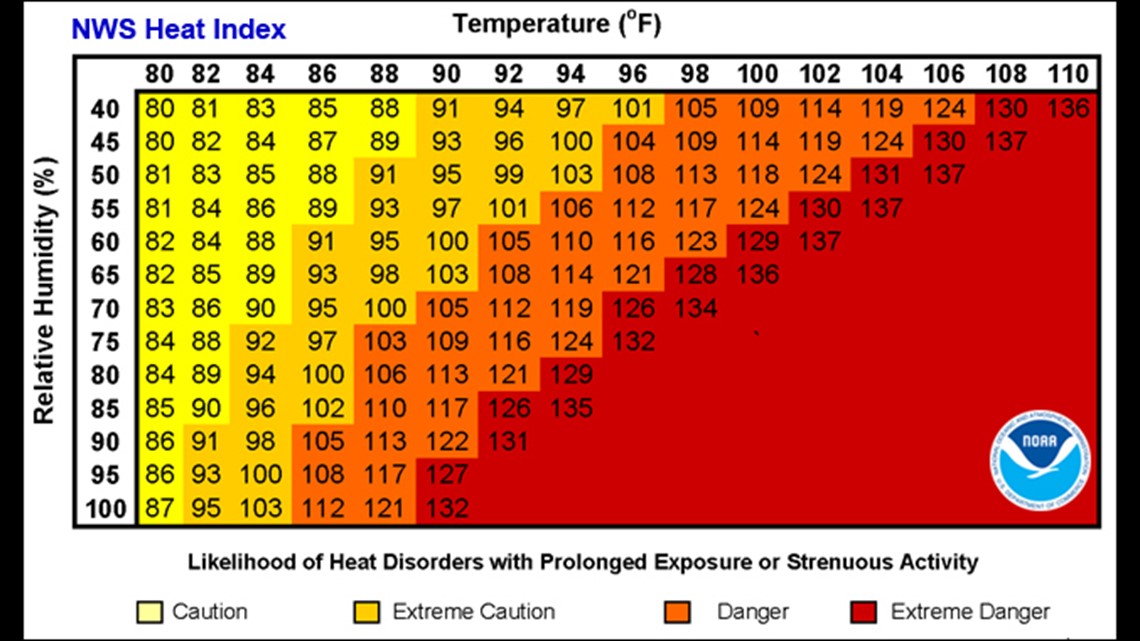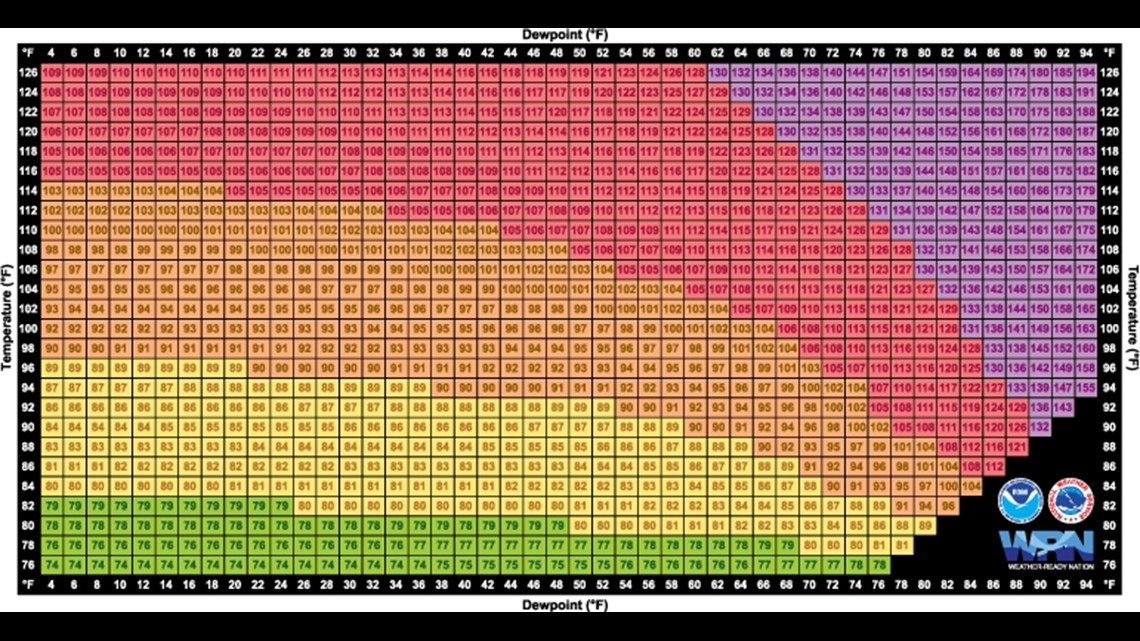What is Heat Index? | wcnc.com

In the Southeast, it is humid during the summertime. This means most days have a heat index. But have you wondered how those numbers are calculated?
CHARLOTTE, N.C. — Heat and humidity are two words that are mentioned in every Charlotte forecast during the summer, but these two things also control the heat index, or how hot we feel.
Our bodies start to feel hotter once it begins feeling sticky outside (which is when the dew point hits 60 degrees).
The Heat Index
The Heat index derives from this simple formula:
Heat Index = -42.379 + 2.04901523T + 10.14333127R – 0.22475541TR – 6.83783 x 10-3T2 – 5.481717 x 10-2R2 + 1.22874 x 10-3T2R + 8.5282 x 10-4TR2 – 1.99 x 10-6T2R2
Or it can be more simply calculated by using charts based on temperature and humidity.


You can also calculate the heat index by using the dew point.


Example: If it is 100 degrees and the dew point is a sticky 60 degrees, it will feel like 101 degrees. But a tropical dew point of 75 degrees will make it feel like 114 degrees.
Here is a fact most people don’t know: Heat index charts are based on shady locations. If you are exposed to direct sunlight, the heat index value can be increased by up to 10-15 degrees Fahrenheit.
Why do we feel hotter?
As heat and humidity increase, so does the heat index — or what our bodies think the temperature is.
When your body gets too hot, you will sweat. That sweat will evaporate, which is a cooling process.
But warmer air holds more moisture which only makes it feel hotter. The high moisture content in the air slows our skin’s evaporation. This causes our internal temperature to rise.
This can lead to different levels of heat disorders due to prolonged exposure, including heat cramps, heat exhaustion and heat stroke.
So when is it considered dangerously hot?
The simple answer is once heat indices reach 103-105 degrees. Here are three ranges to know.
- When heat indices are 90-103 degrees it is encouraged to use extreme caution.
- A heat index from 103-124 degrees is the danger level. Heat cramps or exhaustion are likely and in the worst-case scenario, heat stroke is possible.
- Anything 125-plus degrees is extremely dangerous and heat stroke is highly likely.
Contact Chris Mulcahy at cmulcahy@wcnc.com and follow him on Facebook, X, Instagram and TikTok.
🌩️ If you like weather, watch Brad Panovich and the WCNC Charlotte Weather Team on their YouTube channel, Weather IQ. 🎥
Want to further raise your Weather IQ?


